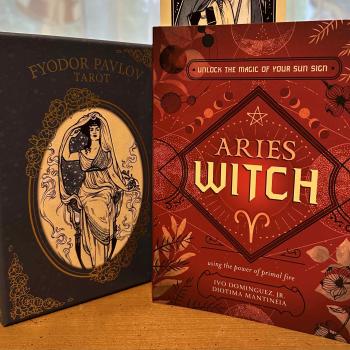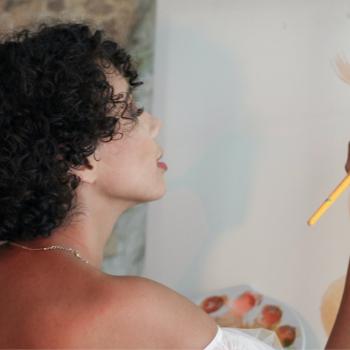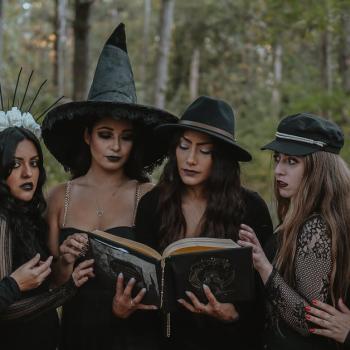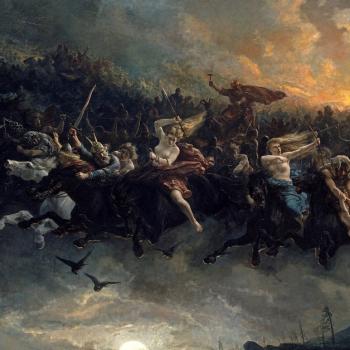It’s summer solstice in the northern hemisphere, a time when skies are sunny, trees are verdant, and rocks by the river are shaggy with moss. Hiking through the woods always makes me think of Pan, the great god of the wild areas. I’ll sometimes hear a low note in the wind and wonder if I’m hearing Pan’s pipes. Maybe he is just over the hill, just past the treeline, watching, wondering.
While researching the symbolism of Pan’s Pipes for a recent article, I came across so many citations connecting his pipes with pleasure. I felt compelled to dig into the juicy subject matter and share what I learned.
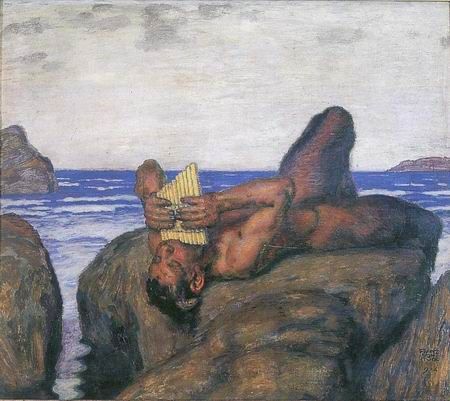
The original story of Pan’s pipes, in Book 1 of Ovid’s Metamorphoses, is one of sensual longing and love. The god of the wild areas, shepherds, and flocks, Pan, was in love with the beautiful forest nymph Syrinx. Or maybe he was in lust — it’s hard to tell. In any case, it’s clear she didn’t love him, as she fled his pursuits. When her escape looked bleak, on the banks of a river, she cried out to her nymph friends. They turned her into a cluster of hollow reeds that grew by the river’s edge. An instant after she transformed, Pan grasped the reeds, only to discover his beloved was gone.
In his dejection, he kissed them, eager to be with her even if she wasn’t in nymph-form anymore. He must’ve found they made a pleasant noise, because he strapped them together and took them with him wherever he went and became legendary for playing them. It was probably his thinking that he’d be close to her that way, at least. I imagine his longing for Syrinx never ended, as he has carried the Pan pipes for over two and a half millennia, playing music wherever he went.
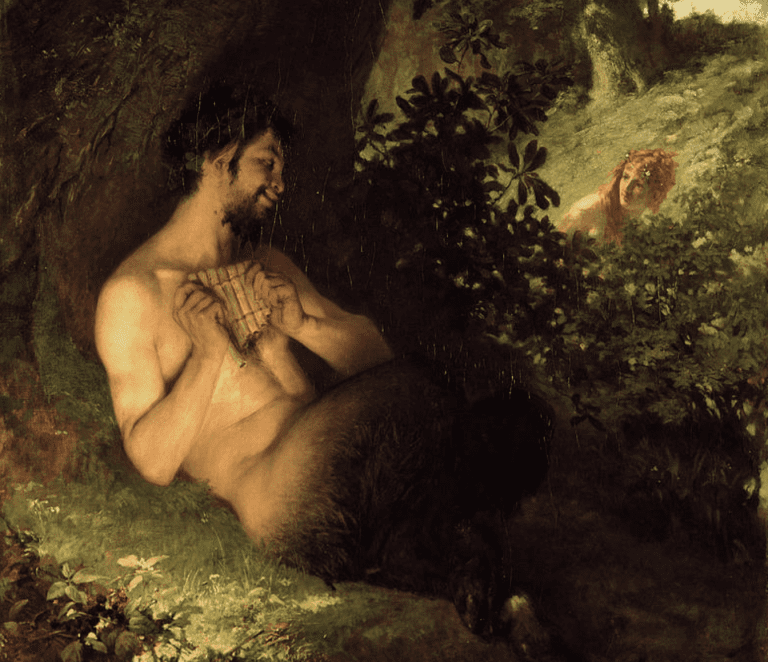
The mythology of the origin of Pan’s pipes reinforces his image as a lusty god — both directly in his actions and indirectly as a study in symbolism. Some scholars and Jungian psychologists perceive the fertile river area to be feminine in nature, and the reeds to be masculine/phallic. The binding of the reeds (phalluses) in such a place (yoni) and using them to create sounds gives rise to something much greater than the original materials — the Pan pipes. The symbolism of the Pan pipes could be said to represent the union of genders, sexuality, and pleasure. The playing of such pipes could be a metaphor for masturbation, for which Pan is also renowned.
So far, Pan’s pipes seem to demonstrate longing, pleasure, and sexual union… but wait — it gets better!
It’s said that the music of Pan’s pipes could make people dance and could lower their inhibitions. It has also been said that the celebrations at Pan’s feast dates occurred at his sacred places, usually at the mouth of a cave, and involved, “eating, drinking and coupling… The whole rite, from beginning to end was accompanied by the playing of pan pipes.” According to some sources, the pipings not only sustained the celebration, it also attracted more people to the party/orgy.
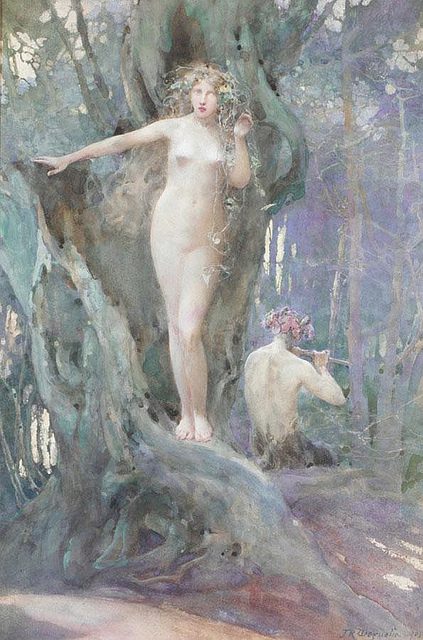
Imagine hearing beguiling pipes on the wind and perhaps the whisper of a baudy moan. You’d know exactly what was happening.
There’s a generally accepted theory that Pan pre-dates the Ancient Greeks and their Pantheon(s). Pan’s celebrations are put into further context considering that Paleolithic flutes found in Germany are among the oldest known human artifacts and may have existed in Greece around the same time. Couple this with the hypotheses that early humans may have developed as a result of biological selection due to orgies. This is a rough connection between Pan, flutes, and ancient human mating rituals, but one that is quite satisfying to consider along with the pleasure aspects of Pan and his pipes.
After Ancient Greek times, Pan’s pipes make several appearances in myth and literature, usually with the themes of pleasure or temptation. Percy Bysshe Shelley wrote about the music of Pan’s pipes in a poem called Hymn of Pan in 1820. In the poem, Shelley references the sweet pipings several times, intimates they create love in nymphs, and finally uses their sad notes as a metaphor for longing and sorrow for lost love. Perhaps the melancholic notes acknowledge both Pan’s loss of Syrinx and Shelley’s late wife Harriet Westbrook, who died in 1816.
In 1860, Elizabeth Barrett Browning gives one of the most ecstatic versions of Pan’s pipes in her poem, A Musical Instrument. Here’s a snippet.
“What was he doing, the great god Pan,Down in the reeds by the river? ……Dropping his mouth to a hole in the reed, [Pan] blew in power by the river.
Sweet, sweet, sweet, O Pan!
Piercing sweet by the river;
Blinding sweet, O great god Pan!
The sun on the hill forgot to die,
And the lilies revied, and the dragon-fly
Came back to dream by the river.”
The last verse above is almost panting in its lyricism, a drastic change to the melodic language before.
The connection of Pan to Peter Pan (1904) can’t be denied. Peter Pan is called ‘Pan’ several times in the original book and play. Like Pan, Peter Pan is also immortal and also uses his Pan pipes to lure children away. Granted, Peter Pan may be a more innocent version of our lusty god, but common themes remain of pleasure and temptation to leave one’s cares behind to join the merry group. In one modern retelling of the story, Peter Pan is revealed as the Pied Piper, another piper who leads ecstatic children away with his pipes/flute.
The connection of pipes with temptation doesn’t stop there. In 1910, Robert Louis Stevenson wrote Pan’s Pipes. In it, he damns the modern age and honors Pan as the cause of all things, echoing the etymology of Pan, which means “all/everything.”
Stevenson goes on to honor Pan as the healing balm for modern maladies.
“So we come back to the old myth, and hear the goat-footed piper making the music, which is itself the charm and terror of things; and when a glen invites our visiting footsteps, fancy that Pan leads us thither with a gracious tremolo…”
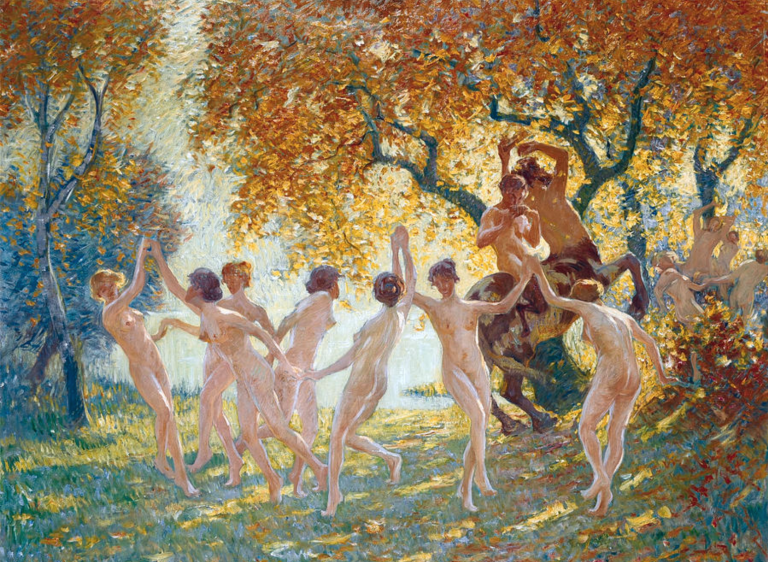
Graham Greene’s Wind in the Willows (1908) features Pan and his pipes. He is the Piper at the Gates of Dawn, playing the pipes and contributing to a wondrous, breathless morning atmosphere. Like Peter Pan, this is innocent and child-like, but not without its ecstasy.
In 1918, the CB Co. published a composition called The Pleasures of Pan, featuring flute, of course, in one of their “Popular Albums” printings. There are even modern instances of the pleasure/temptation theme, such as in the 1964 film Seven Faces of Dr. Lao, where Pan’s pipings arouse a somewhat repressed woman, enabling him to seduce her.
I’ll leave you with a couple of quotes.
“Pan is hiding and piping the low, sweet strain that reaches only the ears of a chosen few. And, now that the year wearily turns and stretches herself before the perfect waking, the god, emboldened, begins to blow a clearer note.”
(April Essay, Graham Greene)
“…in every wood, if you go with a spirit properly prepared, you shall hear the note of his pipe.”
(Pan’s Pipes, Stevenson)
Pan calls to his people, tempting them to be emboldened, to live, to love, and to lust. I believe the enchanting music of Pan’s pipes is still alive and as alluring as ever. And perhaps, if we listen hard enough, we will hear his pipings on the wind.
Happy Solstice! If you liked this article, give us a thumbs up and help us spread the ecstasy.
~ Align with Starlight Witch ~
* Facebook * Twitter * Instagram *
Patreon * Intuitive Witchcraft Group * Blessed Be Box








